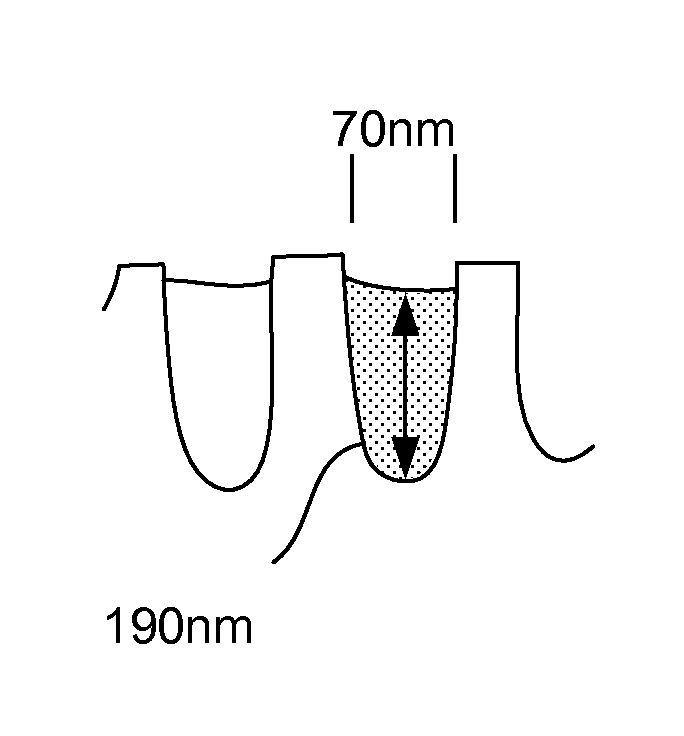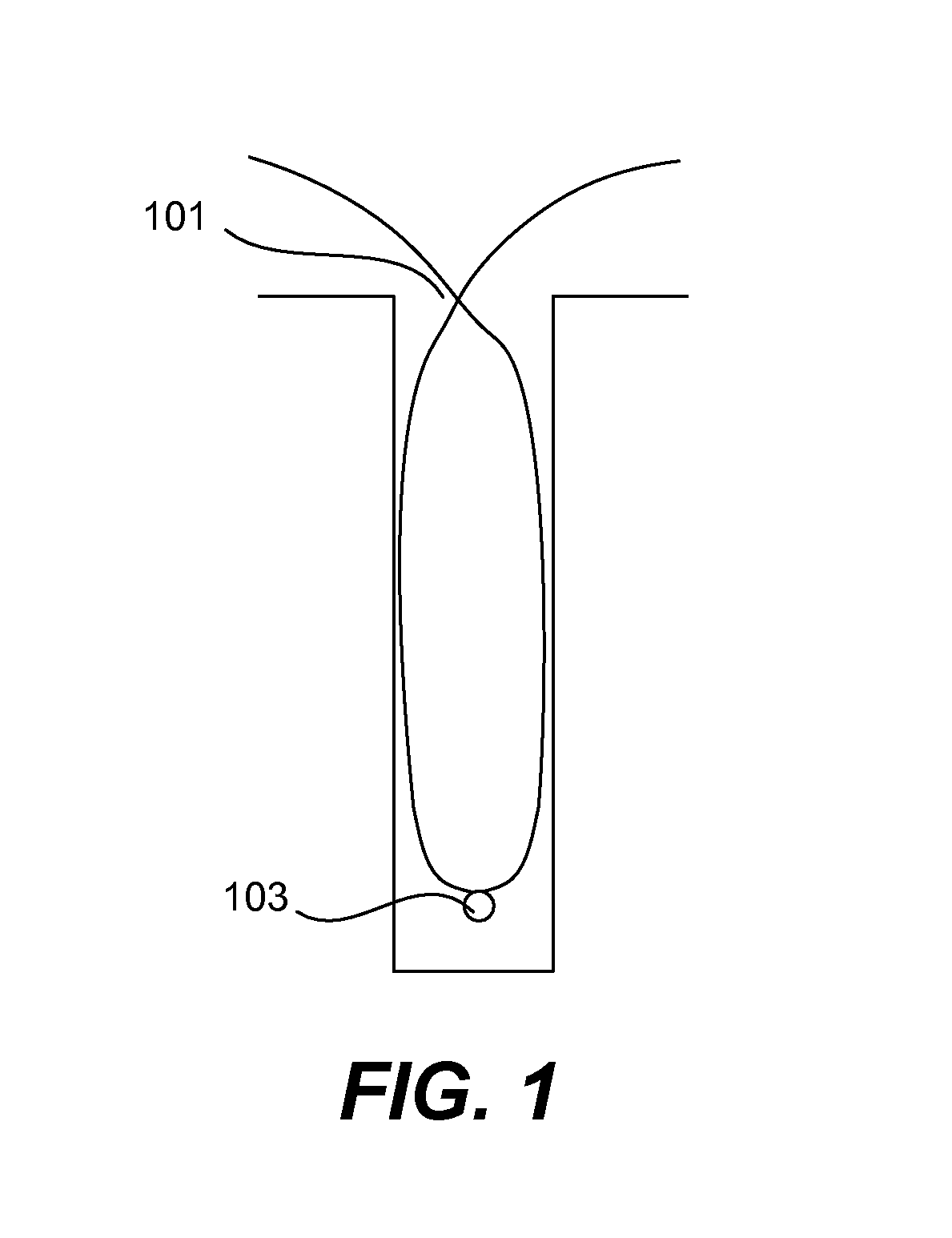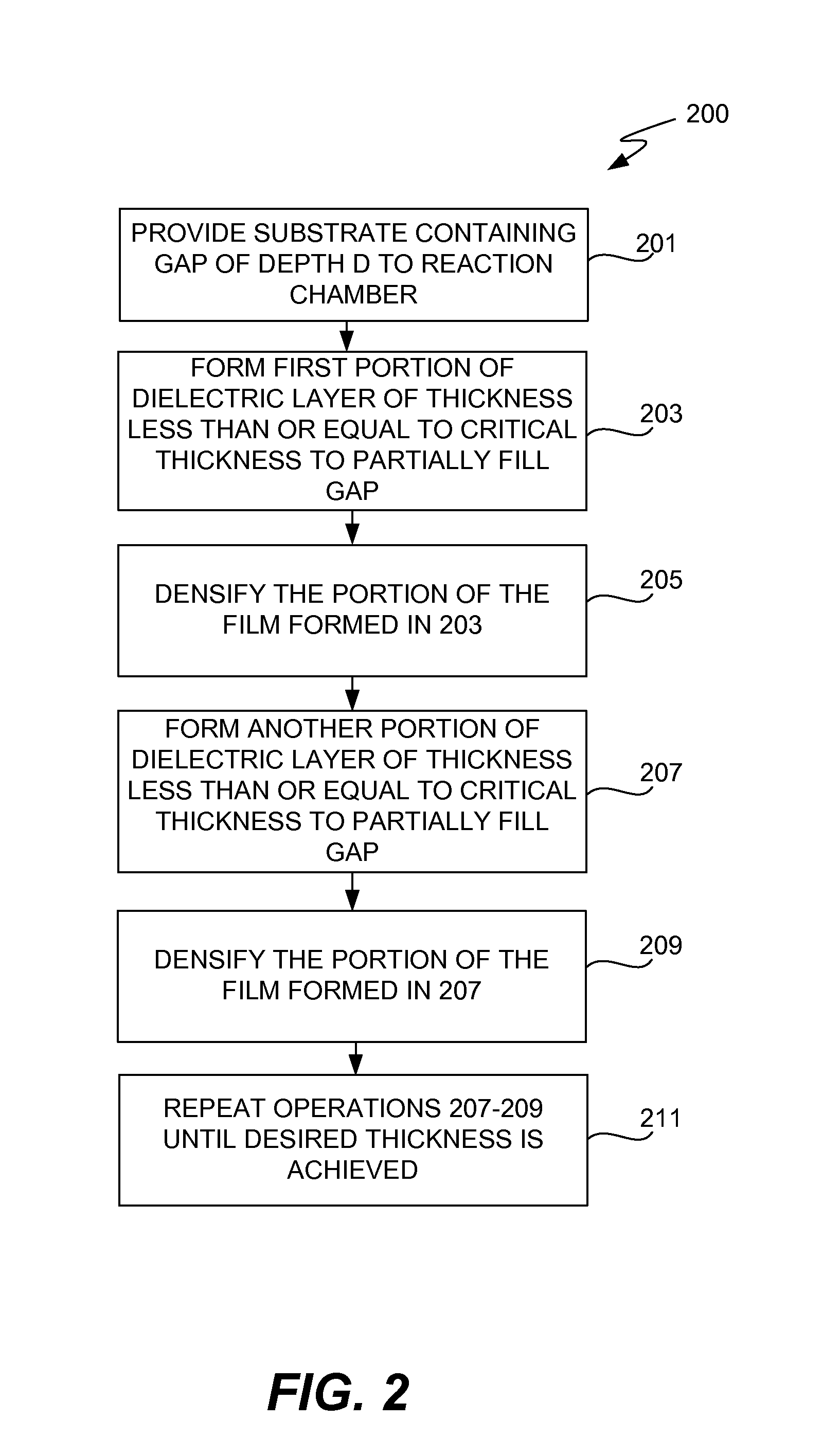Density gradient-free gap fill
a gradient-free, gap-free technology, applied in the direction of semiconductor/solid-state device manufacturing, basic electric elements, electric apparatus, etc., can solve the problems of void-free filling or uniform lining of high aspect ratio spaces (e.g., ar>6:1) becoming increasingly difficult, and forming cusps, also known as overhangs
- Summary
- Abstract
- Description
- Claims
- Application Information
AI Technical Summary
Benefits of technology
Problems solved by technology
Method used
Image
Examples
Embodiment Construction
Introduction
[0019]The present invention relates to deposition processes that provide dielectric gap fill of high aspect ratio (typically at least 6:1), narrow width (typically less than 0.13 um) gaps. The methods of the invention provide uniform, i.e. void-free and density gradient-free, gapfill.
[0020]The methods are particularly useful at technology nodes of 65 nm and below, for which conventional methods of dielectric gapfill may have various shortcomings. For example, neither conventional high density plasma chemical vapor deposition (HPD-CVD) nor sub-atmospheric CVD (SACVD) methods do provide void-free gapfill of high aspect ratio structures, especially of structures having re-entrant profiles. Those methods either deposit more material on the upper region than on the lower region of a sidewall or form cusps (also called overhangs) at the entry of the gap. FIG. 1 shows a rough schematic of a trench partially filled by such a process. Reference number 101 indicates where sidewall...
PUM
| Property | Measurement | Unit |
|---|---|---|
| critical thickness | aaaaa | aaaaa |
| critical thickness | aaaaa | aaaaa |
| width | aaaaa | aaaaa |
Abstract
Description
Claims
Application Information
 Login to View More
Login to View More - R&D
- Intellectual Property
- Life Sciences
- Materials
- Tech Scout
- Unparalleled Data Quality
- Higher Quality Content
- 60% Fewer Hallucinations
Browse by: Latest US Patents, China's latest patents, Technical Efficacy Thesaurus, Application Domain, Technology Topic, Popular Technical Reports.
© 2025 PatSnap. All rights reserved.Legal|Privacy policy|Modern Slavery Act Transparency Statement|Sitemap|About US| Contact US: help@patsnap.com



